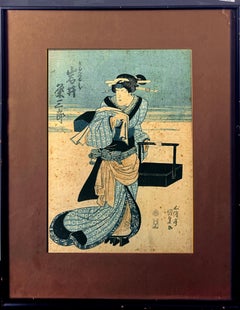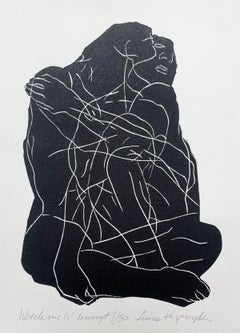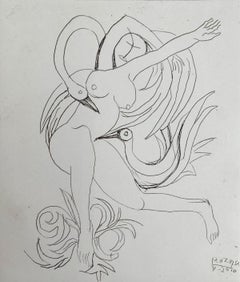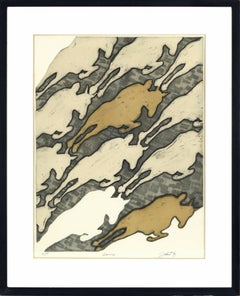Paper Figurative Prints
1850s Realist Paper Figurative Prints
Printer's Ink, Rice Paper, Woodcut
2010s Contemporary Paper Figurative Prints
Paper, Linocut
Early 2000s Contemporary Paper Figurative Prints
Paper, Etching
1960s Pop Art Paper Figurative Prints
Paper, Printer's Ink, Etching
1970s Paper Figurative Prints
Paper, Cardboard
1980s Pop Art Paper Figurative Prints
Paper, Screen
1970s Pop Art Paper Figurative Prints
Paper, Offset
1880s Edo Paper Figurative Prints
Paper, Ink, Woodcut
2010s Paper Figurative Prints
Paper
21st Century and Contemporary Contemporary Paper Figurative Prints
Paper, Screen
20th Century Realist Paper Figurative Prints
Paper, Color, Lithograph
2010s Surrealist Paper Figurative Prints
Paper, Color
1850s Modern Paper Figurative Prints
Paper, Lithograph
1970s Contemporary Paper Figurative Prints
Lithograph, Paper
1940s Modern Paper Figurative Prints
Paper, Ink, Watercolor, Pencil
1960s Post-Modern Paper Figurative Prints
Archival Paper, Lithograph
2010s Contemporary Paper Figurative Prints
Digital, Archival Ink, Archival Paper, Archival Pigment
Early 2000s Contemporary Paper Figurative Prints
Drypoint, Paper, Mezzotint
21st Century and Contemporary Folk Art Paper Figurative Prints
Paper, Screen
1910s Vienna Secession Paper Figurative Prints
Paper
1920s Modern Paper Figurative Prints
Lithograph, Paper
21st Century and Contemporary Contemporary Paper Figurative Prints
Paper, Lithograph
1970s Pop Art Paper Figurative Prints
Paper, Foam Board, Screen
21st Century and Contemporary Contemporary Paper Figurative Prints
Paper, Screen
1850s Naturalistic Paper Figurative Prints
Paper, Ink, Woodcut
1970s Realist Paper Figurative Prints
Rag Paper, Etching
1890s Realist Paper Figurative Prints
Paper
2010s Photorealist Paper Figurative Prints
Photographic Paper, Digital
2010s Contemporary Paper Figurative Prints
Rag Paper
1980s Pop Art Paper Figurative Prints
Paper, Lithograph
1930s Vienna Secession Paper Figurative Prints
Paper
1850s Modern Paper Figurative Prints
Paper, Woodcut
21st Century and Contemporary Contemporary Paper Figurative Prints
Paper, Inkjet
1970s Contemporary Paper Figurative Prints
Paper, Lithograph
2010s Contemporary Paper Figurative Prints
Paper, Drypoint, Etching
Early 20th Century English School Paper Figurative Prints
Paper
1970s American Impressionist Paper Figurative Prints
Paper
1930s Futurist Paper Figurative Prints
Paper, Stencil
1980s Cubist Paper Figurative Prints
Paper, Lithograph
2010s Contemporary Paper Figurative Prints
Paint, Paper, Giclée
1890s Art Nouveau Paper Figurative Prints
Vellum, Lithograph
1970s Modern Paper Figurative Prints
Paper, Printer's Ink, Screen
1960s Paper Figurative Prints
Paper, Lithograph
19th Century Modern Paper Figurative Prints
Paper, Woodcut
2010s Surrealist Paper Figurative Prints
Paper, Color
1970s Pop Art Paper Figurative Prints
Paper, Offset
1950s Contemporary Paper Figurative Prints
Woodcut, Paper
Late 20th Century American Modern Paper Figurative Prints
Handmade Paper, Etching, Aquatint
Late 20th Century American Modern Paper Figurative Prints
Handmade Paper, Etching, Aquatint
Late 20th Century American Modern Paper Figurative Prints
Handmade Paper, Etching, Aquatint
Mid-19th Century English School Paper Figurative Prints
Handmade Paper, Engraving, Lithograph
Mid-19th Century English School Paper Figurative Prints
Handmade Paper, Lithograph, Engraving
Mid-20th Century American Modern Paper Figurative Prints
Handmade Paper, Laid Paper, Etching
Early 20th Century American Modern Paper Figurative Prints
Handmade Paper, Laid Paper, Etching
2010s Paper Figurative Prints
Paper
2010s Pop Art Paper Figurative Prints
Acrylic, Newsprint
Early 20th Century American Modern Paper Figurative Prints
Handmade Paper, Etching, Laid Paper
Early 20th Century American Modern Paper Figurative Prints
Handmade Paper, Etching
Early 20th Century American Modern Paper Figurative Prints
Handmade Paper, Etching
1940s American Modern Paper Figurative Prints
Handmade Paper, Etching




